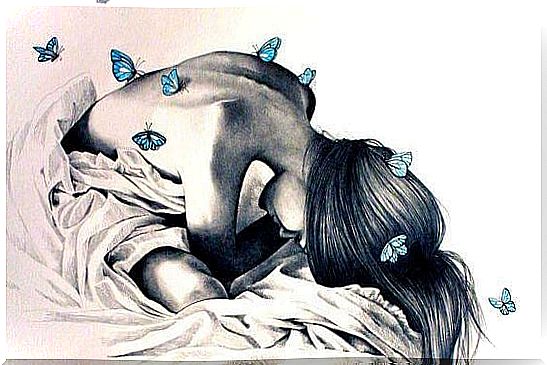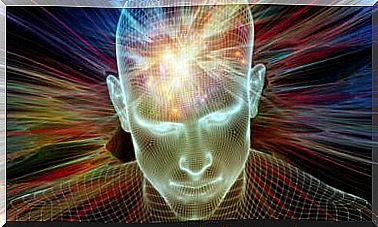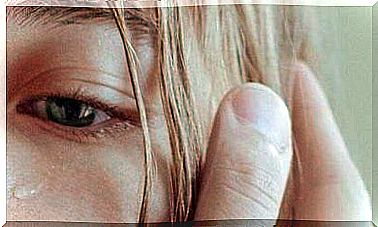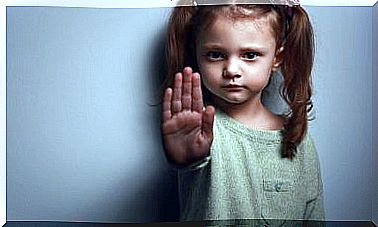Allodynia: When Caresses Hurt

Can you imagine living in a world where caresses hurt, in which the rubbing of clothes hurts you and human warmth is not possible? Unfortunately, you don’t need to imagine it, since that world exists and is lived by people with allodynia.
Allodynia is an abnormal perception of pain that makes stimuli that are normally painless and even pleasant very unpleasant. The rubbing of clothing, the heat of the sun or a draft can be unbearable for these people. Still, it is one of the most unknown and most difficult to treat disorders of chronic pain.
This disorder belongs to the group of neuropathic pain. A form of pain produced by damage or changes in the information-transmission mechanism of the peripheral and / or central nervous system, whose nerves send pain signals for no real reason. As Guevara-López (2016) states: “the degree of alteration will depend on the type and size of the damage or dysfunction of the affected structures” .

Types of allodynia
Although it is not well known, the little that is known about allodynia is that it can be of different types depending on the type of stimulus that causes it :
- : It occurs when pain is felt when a single stimulus is applied or when pressing lightly, as can happen when holding a person’s hand.
- : pain is felt with the repeated application of gentle stimuli or the slightest touch, that is, caresses hurt.
- : when pain is felt when applying thermal stimuli. In this case, the degree of sensitivity is studied with the application of objects on the skin with temperatures between 20º and 40º.
One of the difficulties in the study of adolinia is found in the differentiation of this term from other related ones such as hyperalgesia or hyperpathy. Hyperalgesia occurs when stimuli are painful, although with a higher than normal threshold. The hyperpathy before the repeated repetition of stimuli that at first did not produce any pain.
All this produces a sense of incomprehension towards these patients and towards their suffering that only prolongs the agony of living with such a degree of chronic pain that even breathing is torture. Thus this situation produces innumerable unpleasant consequences and is, in turn, a source of negative emotions.
Emotional consequences of chronic pain
Pain is an essential function, it is adaptive and guarantees our survival as it alerts our brain when something is wrong, both internally and externally. The problem occurs when it goes from being adaptive to being a chronic and excruciating pain that prevents people who suffer from it from leading a normal life. This causes suffering to such a degree that up to 85% of patients with chronic neuropathic pain have depressive symptoms.

Depressive symptoms occur due to the constant struggle that they carry out to try to avoid pain and that often does not have results. This generates impotence, which in many cases ends in depression: especially when the patient surrenders to how overwhelming the pain is.
Anxiety symptoms also occur that intensify the physical pain itself. Given this, the body suffers and begins to generate bad habits to try to counteract this discomfort.
Treatment of neuropathic pain
From a medical point of view, pain management usually consists of the administration of drugs: both opiates and non-opiates depending on the degree of discomfort felt by the patient. However, in the case of allodynia, such as neuropathic pain, this treatment is ineffective. Therefore , in cases in which there is more frequent and intense pain, surgical intervention is recommended to eliminate some of the connections of the pain nerve pathways.
Authors such as Cruciani and Nieto (2006) highlight the use of antidepressants as pharmacological treatment for this type of patient. They state that selective serotonin reuptake inhibitor antidepressants and norepinephrity (eg, duloxetine) appear to be of greater benefit than selective serotonin reuptake inhibitors alone (eg, fluoxetine).
From the psychological perspective it is recommended to work on the acceptance of pain, so that avoidance does not worsen the symptoms. In addition, different biofeedback techniques accompanied by coping strategies are also recommended in order to have the best quality of life.
Although what they need, in general, is understanding on the part of all. It is true that it is a pain that can be very difficult to imagine, since even the stimuli that give us pleasure, such as caresses, cause them pain. However, this does not mean that we do not have to make an effort to understand that your pain is real and, in many cases, ongoing.









